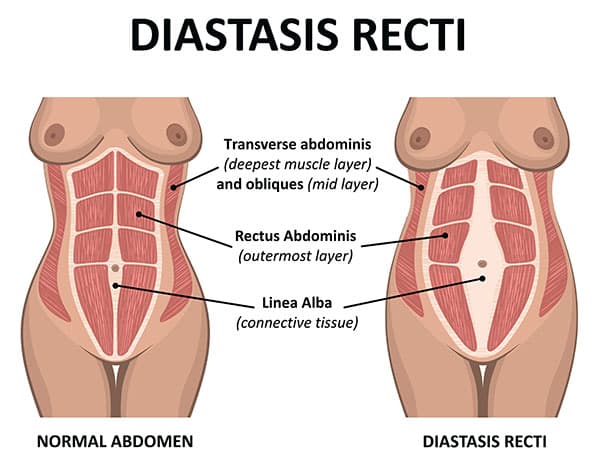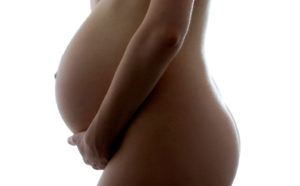How To Fix My Belly Button After Pregnancy
Posted on
Diastasis Recti Surgery to repair split tummy muscles after pregnancy
Are you disappointed with your bulging tummy and wondering, "Why Do I Still Have a Post-Baby Belly After Giving Birth?" – Maybe you have a condition called Diastasis Recti.
If you have been struggling to get rid of that belly fat even after years of giving birth, or if you have tried everything like hitting the gym and going on a diet but still your belly is bulging out. Adding to that, having poor posture and back pain. Then this can be more than just fat accumulated around your belly area. It could be Torn Abdominal Muscles or "Diastasis Recti."
Download Dr Gittos' guide to Tummy Tuck Surgery in NZ
During pregnancy, your body changes a lot. Although some new mums regain their pre-pregnancy bodies within weeks of giving birth, it doesn't happen that way for most mums. You may find it difficult to return to your pre-pregnancy shape.
So, What Is Diastasis Recti?
Diastasis Recti is the separation of the abdominal muscles due to the increased stress and tension on the abdominal muscles as the baby grows inside your belly. It occurs when the right and left sides of the rectus abdominis muscle (at the front of your tummy) separate as your belly expands, like "a zipper that's undone." and don't fully come back together after giving birth.
Diastasis Recti is relatively common with 1 in 2 women experiencing diastasis recti postpartum. However, you might be at a higher risk for developing diastasis recti if:
- You are older than 35 years old when pregnant,
- You had multiple pregnancies,
- You gave birth to heavy babies or Twin pregnancies,
- You have poor muscle tone.

What Are the Symptoms of Diastasis Recti?
The most noticeable symptom of diastasis recti is a belly bulge that doesn't go away 8 weeks after delivering your baby. Other symptoms include:
- Bulging belly
- Outie belly button
- Low back pain
- Urinary incontinence
- Constipation
- Loose belly skin with rashes and infections in the folds
- Difficulty lifting objects
Exercise and nutrition can help improve your post-baby bulging tummy depending on a number of factors, including:
- your genetics and family history
- your body frame
- your lifestyle
- your skin elasticity
- the weight you have gained or lost
- the size of the baby or babies you delivered
- how many times you have given birth
Keep in mind that your body changes a lot during pregnancy, so you will need to allow an adequate period of time for your body to adjust post-pregnancy this can take from several months, up to a year or two.
However, if you have tried eating healthy meals and exercising for a considerable amount of time but you didn't notice any improvements and your diastasis recti has not recovered, you may consider the surgical treatment options.
How To Check If You Have Diastasis Recti?
The best way to confirm that would be getting a professional medical evaluation by your GP or gynecologist who can give you better advice.
Yet, you might consider trying the self-assessment techniques.
Here are the most visible signs that show you have torn abdominal muscles as a result of pregnancy;
- A visible gap (more than 2 finger-widths) in the middle of your abdomen.
- The gap is most noticeable when you contract your abdomen.
- Bulge or ridge that runs down the middle of your abdomen.
Also, you can perform a simple self-test for diastasis recti at-home.
- Lie on your back with your knees bent and your feet flat on the floor.
- Raise your shoulders up off the floor slightly, supporting your head with one hand, and look down at your belly.
- Move your other hand all along your midline abdominal muscles above and below your belly button.
If you feel a gap, or you can fit 2-3 fingers in between your abdominal muscles, you likely have diastasis recti.
Can Exercises Help Repair the Diastasis Recti?
Yes, exercises might help support Diastasis Recti repair, however, if your muscles are split to the extent where they have formed a large gap (larger than 2cm ) and a persistent post-baby bulging tummy, this will often require surgery by a qualified Plastic Surgeon.
Certain Pilates moves and some abdominal exercises, such as compressions, pelvic tilts, toe taps, bridges, etc. may help separated muscles. It is important to keep your abdomen pulled in, rather than pushed out while exercising.
Be careful! wrong exercises can actually cause your abdominal muscles to spread even farther apart.
It is advisable that exercises would be performed under the supervision of a physio or fitness trainer.
Keep in mind that exercises might help with tightening the belly to some extent, but exercises alone cannot reattach torn abdominal muscles. Hence, exercising alone might not help you get back the flat tummy you used to have before getting pregnant.
Moreover, the post-pregnancy hormonal changes and increased Body Mass Index (BMI), will probably cause an uneven body fat distribution making your belly bulge look worse.
What Should You Avoid if You Have Diastasis Recti?
Certain activities can increase the gap between your torn abdominal muscles and make the problem worse.
- Avoid lifting heavy objects.
- Avoid leaning forward when pushing a stroller as the leaning/pushing motion creates pressure on the abdomen that can widen the gap between your abdominal muscles.
- Avoid yoga moves that increase pressure within the abdomen or push your belly button out and cause the stomach to dome.
- Avoid certain exercises, such as; crunches, situps, push-ups, etc.
How Can Diastasis Recti Be Surgically Treated?
If you have a large abdominal separation and it hasn't improved by exercises or physical therapy, then a complete Tummy Tuck or a full Abdominoplasty with abdominal muscle repair might be the solution.
The surgery is performed by a Specialist Plastic Surgeons who focus on Mummy Makeovers and Tummy Tuck Surgery
For mild cases that only need the muscle tightened, the procedure can be performed through a small incision in the bikini line.
Women with a large amount of excess skin will need a complete Tummy Tuck (abdominal corrective surgery) procedure.
This surgery is performed by a qualified Plastic Surgeon and includes; full repair of diastasis recti, repositioning of the navel, and reduction of excess skin.
What To Expect From Surgery?
Surgery will remove the excess skin and the tummy "bulge". In case some excess fats need to be removed for better body contours, a tummy tuck can be combined with liposuction.
About Dr Mark Gittos FRACS (Plast) – New Zealand Plastic Surgeon
Practice locations in Herne Bay Auckland, Northland and Bay of Plenty – Kerikeri, Whangarei, New Plymouth & Tauranga
Dr Mark Gittos is a leading Specialist Plastic Surgeon and operates a practice in Herne Bay, Auckland and in the UK. The practice focuses on both surgical and non-surgical procedures, each designed to help restore, improve or change a physical characteristic or problem. The first step in every case is to talk through your personal requirements and explore all the options, before deciding on the most effective solution.
Dr Mark Gittos offers high quality, natural-looking cosmetic surgery results and is highly experienced in Breast, Body and Face Surgery having performed over 4000 Surgeries in the last 26 years. With worldwide expertise Dr Gittos is an expert in breast, face and body surgery for men & women.
Naturally, before any treatment is begun, we will explain clearly the advantages and risk factors; so that you have the information you need to make an informed decision that is best for you. Visit the practice to find out more.

NEXT STEPS
Do your Research
- Read the Website and Blogs relevant to your procedure
- Browse our Frequently Asked Questions including how to choose a Surgeon for your procedure
- Download and read the FREE Guides to Surgery
What to Bring to your Plastic Surgeon Consultation
- Bring a friend or relative to help discuss the information and your choices
- Take lots of notes and read the documents provided thoroughly
- Dress in simple clothes as you may need to undress for examination
- Bring your medical referral and any relevant medical documents or test results
Book your Initial Surgery Consultation
- A Referral from your GP or specialist is helpful but NOT essential – you can have a consultation without a GP Referral
- Email us or Call on 09 529 5352 to arrange your surgeon consultation appointment.
- Book a consultation with Dr Gittos by paying the Consultation Fee – $295+GST
Please contact us to arrange to book a consultation with our Specialist Plastic Surgeon or to speak with our Patient Care Advisor.
Send an enquiry form today or phone 09 529 5352 during Clinic Hours
How To Fix My Belly Button After Pregnancy
Source: https://www.drmarkgittos.co.nz/blog/split-tummy-muscles-diastasis-recti/
Posted by: robertsonspegraidn.blogspot.com


0 Response to "How To Fix My Belly Button After Pregnancy"
Post a Comment